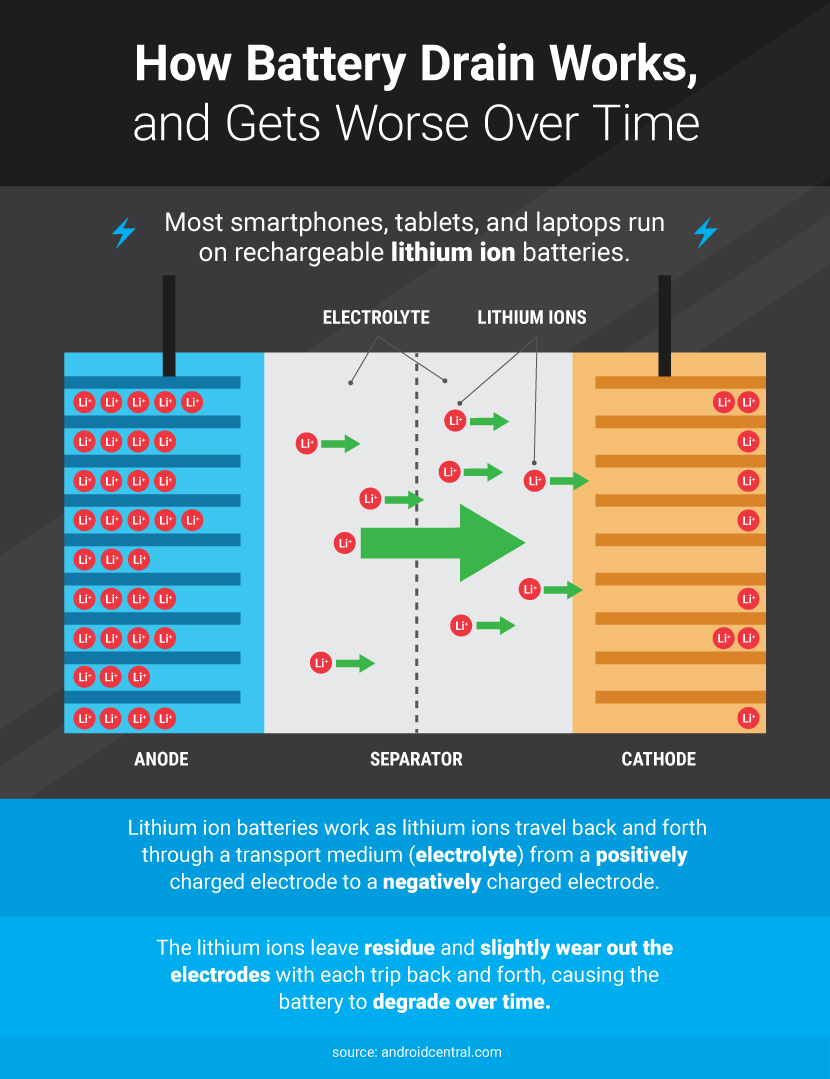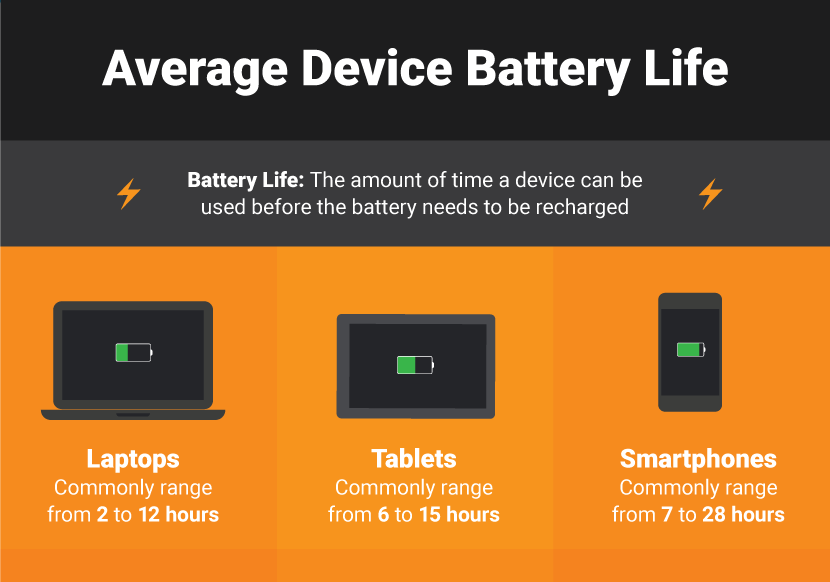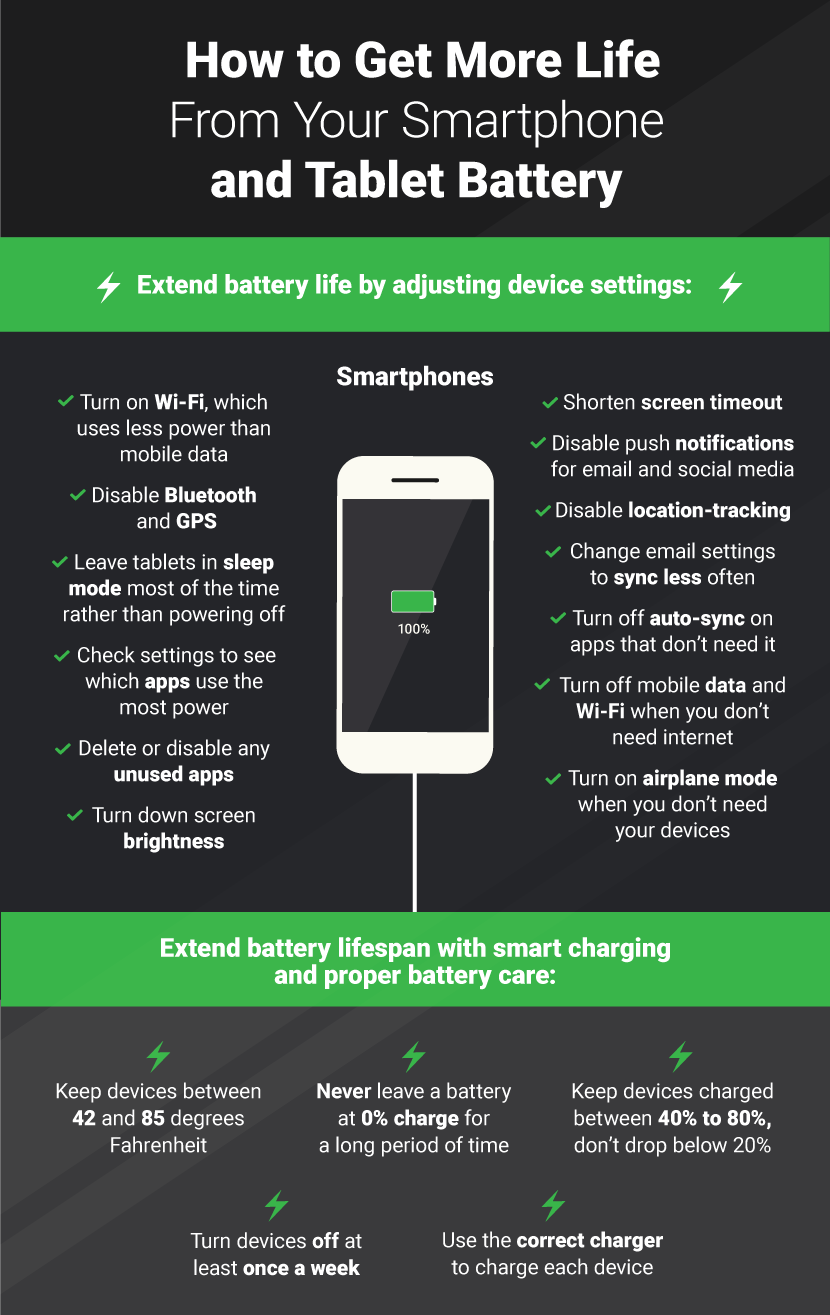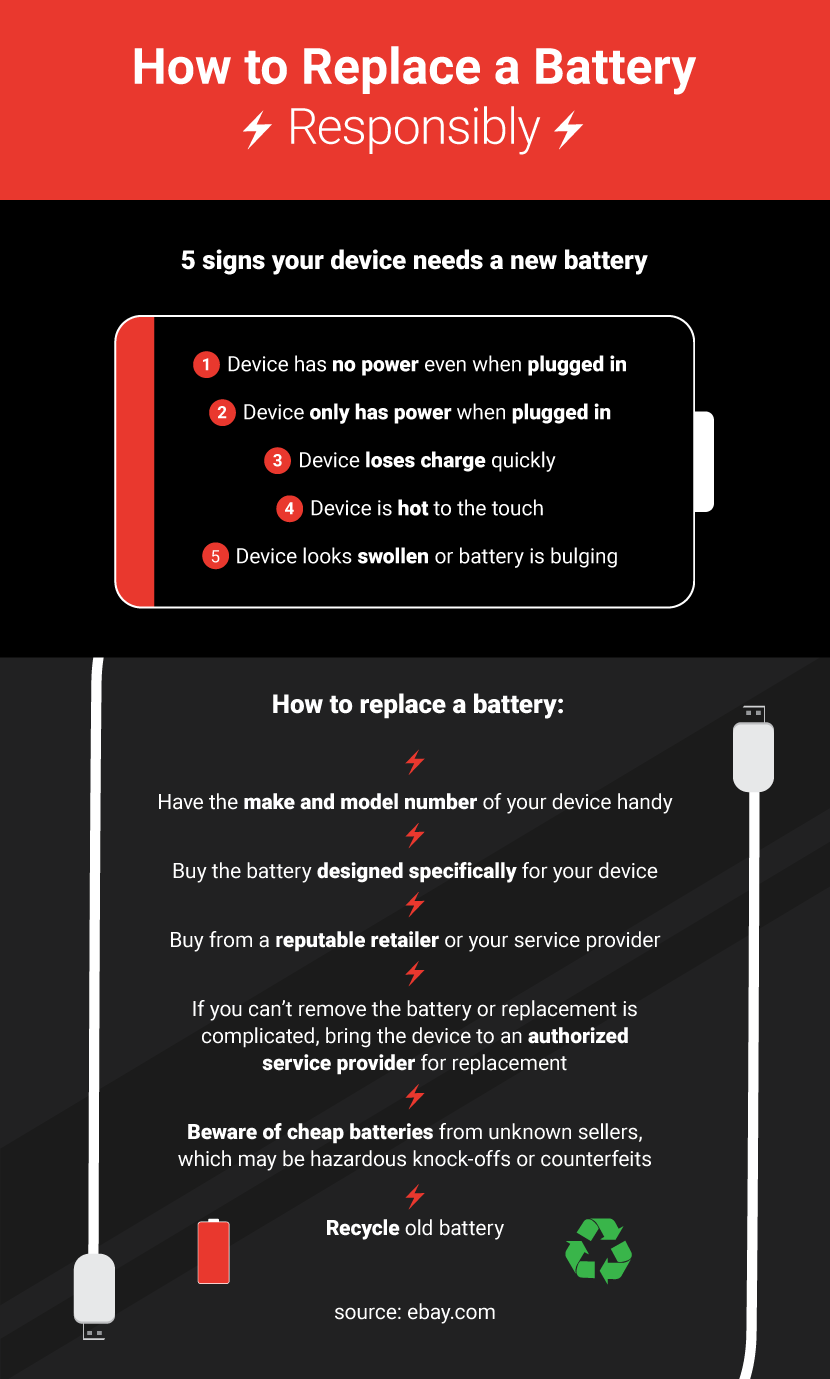No More Battery Blues:
Prolonging the Daily Battery Life of Your Laptop, Tablet, and Smartphone
Mobile devices have revolutionized the shopping, reading, viewing, listening, working, and social habits of people all over the world. The average American spends about five hours a day on a mobile device, and that number jumps by about 69 percent a year.http://flurrymobile.tumblr.com/post/157921590345/us-consumers-time-spent-on-mobile-crosses-5
We may love our devices, but most of us are not as fond of our batteries. Daily battery life is the top consideration for consumers when picking a phone. In one survey, 89 percent of respondents said it was important.http://www.theguardian.com/technology/2014/may/21/your-smartphones-best-app-battery-life-say-89-of-britons However, manufacturers have prioritized making slim and light devices over extending battery life, and the majority of smartphone users need to charge their devices at least once a day.http://www.howtogeek.com/147158/htg-explains-why-is-smartphone-battery-life-so-bad/http://www.theguardian.com/technology/2014/may/21/your-smartphones-best-app-battery-life-say-89-of-britons Battery drain only gets worse as devices age.
Want to get more life out of your smartphone, tablet, and laptop batteries? Keep reading to learn how device batteries work and why they degrade over time, then discover how to increase the daily life and total lifespan of your batteries.
Learning more about the batteries in your devices is not just about convenience; it’s also a safety concern. Rechargeable batteries in personal and household devices can be hazardous if they’re not charged, used, and replaced properly.

Be Battery Savvy
Perhaps you’ve read headlines about injuries and deaths resulting from exploding smartphones? In all these cases, lithium ion batteries were the culprit. This is the same type of battery used in nearly all mobile devices today, as well as in digital cameras, rechargeable drills, electric cars, and many other electronic gadgets.
Most scary battery accidents are caused by production and design flaws. However, user error can play a role. Learning how batteries work and the best way to care for them can help you mitigate your risk of a mishap and keep your devices running efficiently.

Lithium Ion Batteries 101
Lithium ion batteries have been in widespread use since Sony released the first one in 1991, and they all work in basically the same way. Lithium ions travel back and forth through electrolyte, a transport medium, from a positively charged electrode to a negatively charged electrode. The ions leave some residue on the electrodes and wear them down slightly with each charge, causing the battery to lose a little capacity every time it’s charged.http://www.greencarreports.com/news/1092854_why-lithium-ion-batteries-degrade-with-repeated-charginghttp://www.engadget.com/2015/03/23/lithium-ion-battery-nanoscale-view/
Manufacturers estimate that most lithium ion batteries stay at full capacity for 300–500 charge cycles. Some laptop batteries can stay at full capacity for closer to 1,000 charge cycles.https://support.apple.com/en-us/HT201585 A charge cycle equals one complete charge and discharge, not necessarily all at one time. Once a battery degrades to 80 percent capacity, the user may want to replace it.http://batteryuniversity.com/learn/article/how_to_prolong_lithium_based_batteries
Optimize Settings for Better Battery Performance
Does the battery on your tablet or smartphone drain quickly even though you haven’t had your device for long? Certain services and apps, especially those that sync automatically or use GPS, draw a lot of power. Deleting or disabling apps you’re not using and altering some of your device settings can dramatically improve your device’s daily battery life.
Check your battery usage settings to determine what’s drawing the most power. Chances are it may be your screen. Adjusting the screen brightness and decreasing the screen time-out setting can make a big difference. See the illustration below for a list of other settings to consider adjusting.

“Charge Smart” to Triple Battery Lifespan
Once you’ve altered your settings to improve daily battery life, optimize how you charge your devices to extend your batteries’ lifespan.
First of all, if possible, use the charger that came with a device to charge it. An off-brand charger won’t usually harm a device, but it may not charge as efficiently. Also, be careful to keep your charger cords and connectors in good shape.
Shallow and frequent charges are best for lithium-ion batteries. Aim to keep your device charged between about 40 percent and 80 percent most of the time rather than letting it fluctuate between 0 percent and 100 percent. According to the Battery University website, shallow charging can extend a battery’s lifespan from the typical 300–500 charge cycles to as many as 1200–1500 charge cycles. (A charge cycle is one complete charge and discharge, not necessarily all at once.)http://www.techrepublic.com/blog/10-things/10-common-misconceptions-about-mobile-device-batteries/http://batteryuniversity.com/en/learn/article/how_to_prolong_lithium_based_batteries/subscribe_thx
Don’t allow your battery to completely discharge on a regular basis. If your device’s battery is nearing 20 percent and you’re away from a charger, turn the device off or put it in low power mode to preserve as much charge as possible until you can get to a charger.http://www.apple.com/batteries/maximizing-performance/
It’s best to unplug smartphones and tablets once they’re charged, although it’s okay to leave them charging overnight occasionally. Lithium ion batteries have electronic controllers to prevent overheating and overcharging.http://www.techrepublic.com/blog/10-things/10-common-misconceptions-about-mobile-device-batteries/ If you use your laptop like a desktop and always have it plugged in, the battery may degrade more quickly. Let it discharge regularly to keep the electrons moving in the battery cells. Aim for a mixture of running the laptop while plugged in for part of the day and on battery power for part of the day.http://www.makeuseof.com/tag/leave-laptop-plugged-time/http://www.apple.com/batteries/maximizing-performance/
If you need to store a device for a long period, leave it at about 50 percent charge. Leaving a battery completely discharged for a long period can cause it to lose its ability to carry a charge.http://www.hostdime.com/blog/overheating-tablets-and-laptops-cause-problems-for-consumers/
Watch the Temperature
Devices generate a lot of heat. Leaving them in a hot car, overloading them with demanding apps, charging them in certain types of cases, or using them on a bed or other soft surface can cause batteries to overheat and degrade more quickly.
For optimal performance, keep devices in temperatures between 42 degrees Fahrenheit and 85 degrees Fahrenheit.http://www.apple.com/batteries/maximizing-performance/ If a device is getting hot to the touch, don’t ignore it. Let the device cool down and do some troubleshooting to diagnose the cause.
Laptops may be especially prone to overheating because of the way they’re used. Keep your laptop running optimally with these best practices:

Some futurists predict that vastly better battery technology is coming. Perhaps in the future, we’ll be able to charge devices for a few seconds for months of use.http://www.pocket-lint.com/news/130380-future-batteries-coming-soon-charge-in-seconds-last-months-and-power-over-the-air For now, though, our beloved devices run on lithium ion batteries, which require frequent recharging and degrade over time. Adjust your settings and optimize the way you use and charge your devices, and you’ll minimize your risk of a battery accident, optimize the daily life of your batteries, and increase their overall lifespan.
Embed the article on your site

